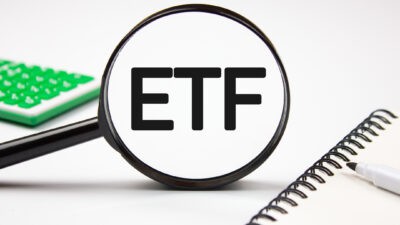The Vanguard Australian Shares Index ETF (ASX: VAS) is a leading exchange-traded fund (ETF) that enables Aussies to invest in the S&P/ASX 300 Index (ASX: XKO). The dividend-paying nature of many of the large blue chips in the portfolio can appeal to retirees.
ASX ETFs can provide a very simple way for investors to track the performance of a particular share market or industry. Low fees are one of most appealing qualities of index funds like the VAS ETF.
We're going to look at how effectively the VAS ETF can help grow our wealth.
Strong dividend income
An ETF passes any dividends it receives onto investors, so if the underlying holdings have a good dividend yield, the VAS ETF can provide a solid overall dividend yield as well.
According to Vanguard, the Vanguard Australian Shares Index ETF has a dividend yield of 3.7% (which doesn't include the franking credits).
That high yield is thanks to sizeable allocations to stocks like BHP Group Ltd (ASX: BHP), Commonwealth Bank of Australia (ASX: CBA), National Australia Bank Ltd (ASX: NAB), Westpac Banking Corp (ASX: WBC) and ANZ Group Holdings Ltd (ASX: ANZ).
If someone's portfolio has a higher dividend yield, it means they don't need as large a wealth balance to generate a targeted amount of dividend income. For example, a $1 million portfolio with a 3.7% dividend yield generates $37,000 in annual dividends. If a fund had a 2% dividend yield, someone would need to have a $1.85 million balance to receive the same $37,000 of cash flow.
On this side of things, the VAS ETF can help people retire earlier. Reaching a lower balance is more attainable for investors.
Slower capital growth
ASX blue-chip shares like BHP, CBA and the other ASX bank shares are not known for delivering strong capital growth compared to global stocks like Alphabet, Microsoft, Nvidia and Amazon which have grown enormously over the long term.
The heavy influence of the banks and miners on the ASX 300 has resulted in quite slow capital growth for the VAS ETF. In the past ten years, the ASX ETF has achieved average capital growth per annum of 3.2%, and in the last three years, it has seen average capital growth of just 1.9% per annum.
Even with the dividends, the total return (dividends plus capital growth) of the VAS ETF over the past three years and ten years has been an average of 7.1% and 7.7%, respectively.
Compare those returns to the Vanguard MSCI Index International Shares ETF (ASX: VGS) – an ETF focused on the global share market – which has returned an average of 12.7% per annum since inception in November 2014.
If someone invested $1,000 a month for 20 years and the investment produced an average return of 12.7%, it would become worth $938,000.
Investing $1,000 per month for 20 years in an investment that produced an average of 7.7% per annum would grow to $531,000.
That's a big difference and shows how important capital growth is. However, the global share market isn't guaranteed to continue its long-term outperformance.
For someone wanting to reach a certain investment balance, the VAS ETF has not demonstrated as strong a performance as globally-focused funds like the VGS ETF.
Foolish takeaway
The Vanguard Australian Shares Index ETF is a decent option at under $100 per unit for investors looking to receive dividend income.
The VAS ETF can help investors reach retirement, but other options could deliver stronger total returns, which may be more helpful for bringing forward an early retirement.









